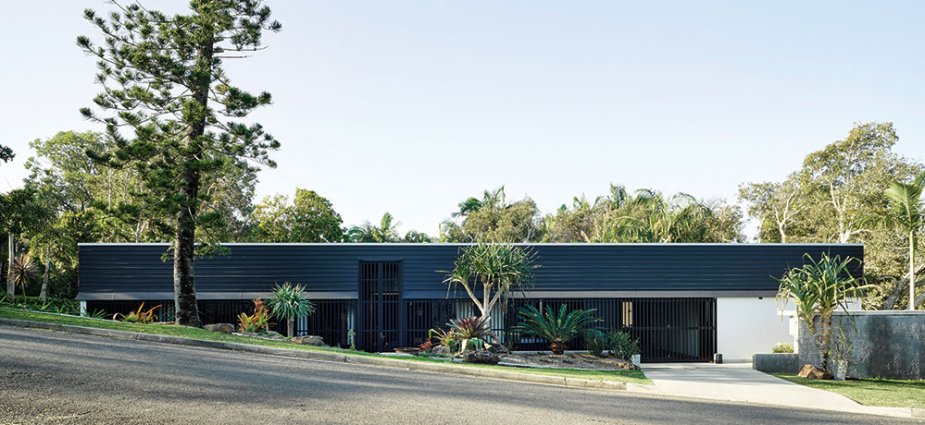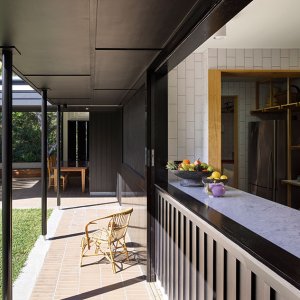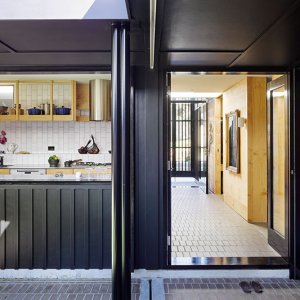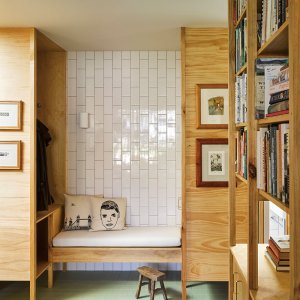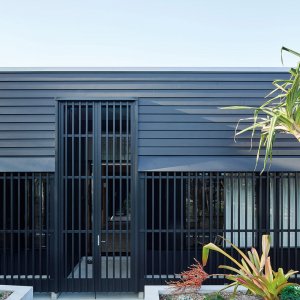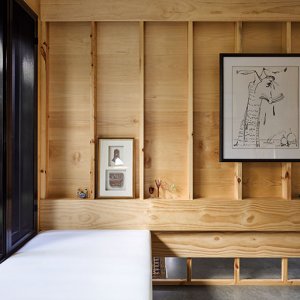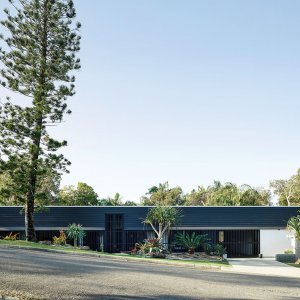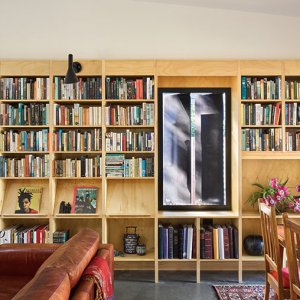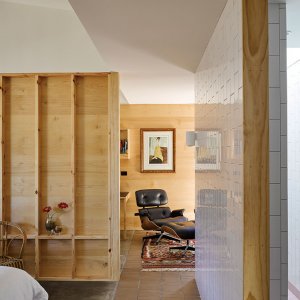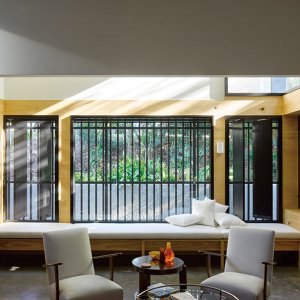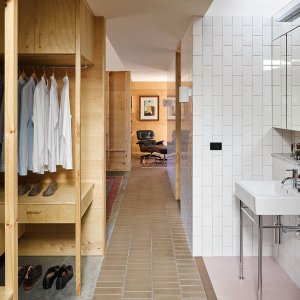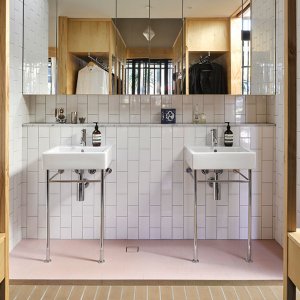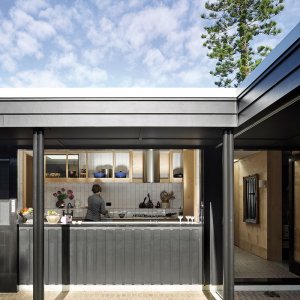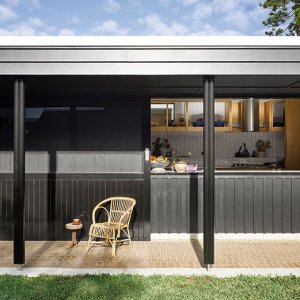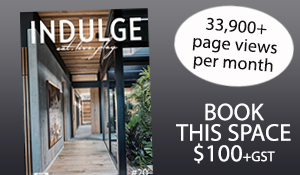Poised on the fringe of the coastal mecca beside a sandy wetland forest reserve, Byron Bay House delivers the unexpected for a beachfront abode.
Winner of the 2017 House of the Year (Gold Coast and Northern Rivers Region) in the AIA Queensland Architecture Awards, the mandatory’ sea views of a beach house are non-existent in this home, made unfeasible by the low-lying nature of the property’s location. From the sleek dark exterior facing the street opens an airy and light space within, offering the first surprise of this unorthodox seaside retreat.
Queensland architect Stuart Vokes was presented with the challenge of connecting the home to the coastal setting using senses other than sight. “There is a growing reliance on one’s optical sense as a way of bringing pleasure and beauty to our lives,” Vokes said. “In the case of houses at the beach, I see that it often translates into an obsession with making a window that has a great view where you can see the ocean,” he said. “Instead, the floorplan crafted an outdoor circulation space around the central courtyard, meaning occupants find themselves falling in and out of outdoor spaces as they walk room to room. Being outside provides more opportunities to connect your whole body to the conditions of the setting. By being outside you can hear the crashing of the waves or smell the salt in the air.”
In designing a home for the Byron Bay Writer’s Festival founder and partner, Vokes knew his design would need to pay homage to the owners’ love of books. Their connection to literature was essential in the design. “In their new home, we took delight in the idea that instead of books inhabiting one room, we could continue on with the behaviour of reading wherever they go. We talked about the view that books should be with you as companions in different rooms, so they are always beside you.”
Stepping into the home is a booklover’s delight, with rich hoop pine timber shelving the functional centrepiece of each room, truly making the entire house a library. “If you really look at how people behave and how their interests and hobbies occupy a building, that can then become a conscious way in which you might design the interior for their building,” Vokes muses. “From the outset we were constantly thinking, how does this wall turn into storage or shelving.”
Inspired by the owners’ interest in Scandinavian and Japanese architecture, the distinction between internal timber walls and cabinetry is blurred. Shelves, hanging racks and similar furniture items were constructed in the same style. “It was a more holistic way to think about the crafting of the home with the hands of the carpenter, rather than many individuals specialising in certain areas.” Vokes believes it encourages carpenters to handle timber carefully if they know it will be a centrepiece of someone’s oasis.
With its innovative design and tranquil light filled reading nooks throughout, it is no surprise this home won the owners’ hearts as well as an industry award.
Readers also enjoyed this story about travelling to Big Sur.
